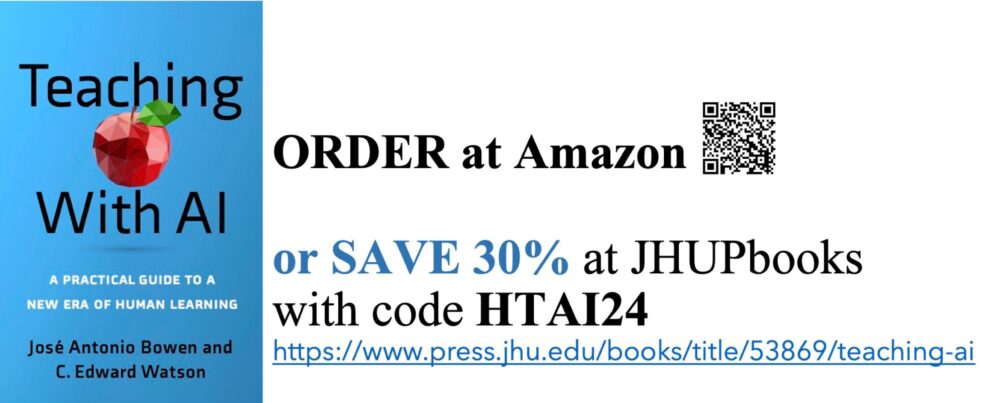Summary
The most important benefits to using technology occur outside of the classroom. Use technology for first exposure to material, student engagement, preparation between classes, new assignments and to free yourself from the need to “cover” all of the content in the classroom. This creates more class time for direct student to faculty interaction and discussion, which is the best way to stimulate the change in mental models that is real learning (and justify the higher price tag of our physical campus experience). The classroom of the future is a seminar, not a lecture hall.
Here are four interactive workshops and a keynote that can be delivered live or online to any size audience. All sessions feature some active learning. The short keynote (also available as a very short 15m video) provides an overview and makes the case for both sensible and radical use of new technology. The workshops focus on the practical questions of immediate interest to faculty:
- Workshop A: Learning Outcomes and Rubrics (no technology!)
- Workshop B: E-Communication and Social Media for Student Engagement
- Workshop C: Easy Technologies for Better Preparation, Reading, and Writing
- Workshop D: Reassembling the Pieces: New Activities and Course Design
Possible combinations include:
Keynote (60m) + Workshop(s) (90m each)
Keynote + Workshop Combo — Single Session (90m)
Video Intro (15m Homework) + Workshop(s) (90m each)
Workshop Combos (120m)
Complete Course Re-Design (Workshops A-D, 6 hours, see below)
There are more combinations listed below and sessions will be tailored to individual departments and university needs. There is also a session focused on administrators and the ways to support faculty and new teaching models.
Keynote: Teaching Naked
How Moving Technology out of your College Classroom will Improve Student Learning
Teaching Naked Keynote Handout
Technology is changing higher education, but the greatest value of a physical university will remain its face-to-face (naked) interaction between faculty and students. The most important benefits to using technology occur outside of the classroom. New technology can increase student preparation and engagement between classes and create more time for the in-class dialogue that makes the campus experience worth the extra money it will always cost to deliver. Students already use online content, but need better ways to interact with material before every class by taking online quizzes, doing interactive online assignments, playing games, asking questions or working in online communities. By rethinking our assignments, use of technology and course design, we can create more class time for the activities and interactions that most spark the critical thinking and change of mental models we seek.
(This stand- alone 60-90m partially interactive session can be shortened and combined with one or more detailed workshops. It is focused more on why and making the case for course redesign, while the workshops focus on the how and the practical.)
